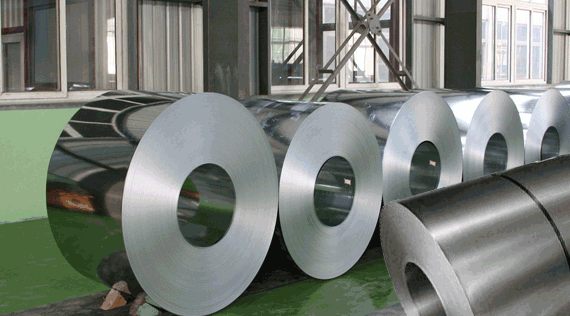
LONDON, May 24 (Reuters) - Europe's primary aluminium smelters are continuing to curtail production in the face of soaring energy costs.
The region's output of the light metal has fallen by an annualised 550,000 tonnes over the last year with the slide still accelerating.
Aluminium smelting is an energy-intensive business and Europe's smelters were struggling with elevated power pricing even before Russia launched what it calls a "special military operation" in Ukraine.
That has exacerbated Europe's energy crunch with forward power prices regularly hitting fresh highs. The cost on Europe's aluminium smelters is rising all the time with scant sign of any imminent relief.
Little wonder then that European buyers are paying record physical premiums or that aluminium is now being imported from as far away as China.
Western European output of primary aluminium totalled 244,000 tonnes in April, according to the latest assessment by the International Aluminium Institute (IAI).
That was down by 13.2% on April last year with the annualised run-rate sinking to a fresh low of 2.97 million tonnes.
Annualised production has now fallen by 470,000 tonnes from last year's May peak of 3.44 million tonnes - just before power prices starting moving upwards.
The biggest single loss has been the 228,000-tonne per year San Ciprian smelter in Spain, which owner-operator Alcoa (AA.N) has idled until 2024, when it will reopen with renewable power sourcing.
Many of Western Europe's other aluminium smelters are privately owned, meaning no publicly-available quarterly updates, although several warned in the fourth quarter last year that they were curtailing capacity.
Annualised production in the region has dropped another 305,000 tonnes since then, implying accumulating rates of power-related smelter disruption.
The problem is that European power prices show no signs of easing any time soon and may indeed get worse as the European Union attempts to pivot away from reliance on Russian fossil fuels.
When European smelters first began idling capacity in the third quarter of 2021, the expectation was that it was a seasonal phenomenon with the cuts likely to be reversed in spring as temperatures rose and energy demand fell.
That is no longer part of the script.
Aluminium production in Eastern Europe has also been falling since the start of 2022.
April production of 333,000 tonnes was down by 2.4% on April 2021, while annualised run-rates have dropped by a little over 80,000 tonnes in the first four months of the year.
The IAI's Eastern Europe production figures include Russian giant Rusal but also several smaller operators, all of which have been reducing output.
The Podgorica smelter in Montenegro was fully idled by the end of 2021, taking out the last 63,000 tonnes of operating capacity. The plant will maintain products output using purchased ingot, quite possibly Chinese ingot, judging by the 20,000 tonnes of exports that departed China in February for the Balkan country.
The Slovalco smelter in Slovakia cut 20% of its 175,000-tonne per year capacity late last year and another 20% in the first two months of this year.
The largest reduction and the one that may be driving the year-to-date decline in regional production has come at Romanian producer Alro, which announced in December it would be cutting three of five operating potlines, taking out 132,500 tonnes of production capacity.
There's no evidence yet that Rusal's production of primary aluminium has been impacted by the loss of alumina feed from its Ukrainian refinery, which was closed shortly after the Russian invasion, or its Australian operations after the country's government prohibited exports.
Or at least not through April. The IAI's monthly updates are inevitably a rear-view mirror in what is a fast-changing European aluminium dynamic.
Russian aluminium is not sanctioned by either the United States or the European Union.
Both have already learnt the hard way that Rusal is a strategic supplier of aluminium to Europe. U.S. sanctions on the company and its owner Oleg Deripaska in 2018 were massively disruptive to aluminium supply-chains and pricing.
Those sanctions were lifted in 2019 after Deripaska relinquished operating control of the company, affording Rusal diplomatic cover against sanctions this time around.
European consumers can only be grateful, even those that have decided to self-sanction anyway.
They are already paying a record $615 per tonne over the LME cash price for physical duty-paid metal on the spot market. Without continued flows of Rusal metal, they would be paying higher prices still.
The historic premium for physical aluminium in Europe is drawing in metal from Asia, both from LME warehouses in the region and, highly unusually, from China.
Primary aluminium exports are subject to a 15% duty in China, which makes it all the more extraordinary that it shipped significant amounts of metal to Europe in the first quarter of this year.
China's winter power crunch has passed and the country's smelters are ramping up aluminium production. National output rose by an annualised 3.4 million tonnes in the first four months of the year, according to the IAI.
With domestic demand growth stalled by Beijing's zero-COVID lockdown policy, China has plenty of metal to export.
Europe, by contrast, is experiencing a widening supply deficit as the region's smelters curtail ever more capacity.
That dynamic won't change until the region's energy crisis abates, which it shows no signs of doing any time soon.